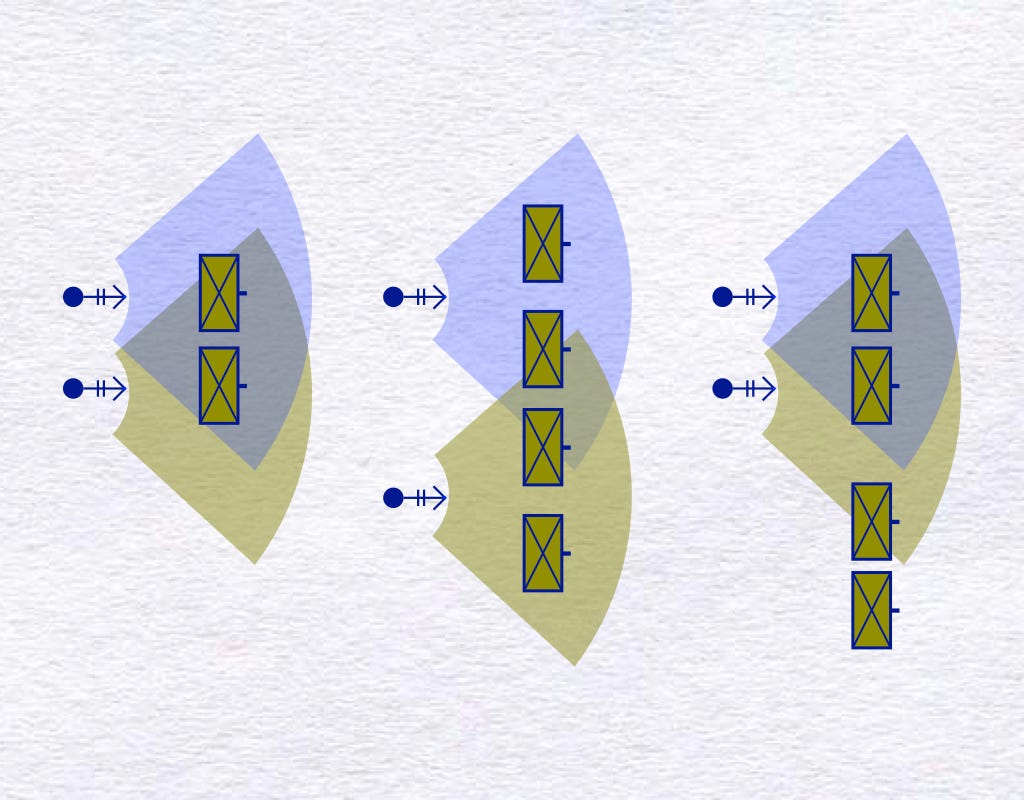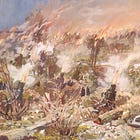Heavy Mortars in Normandy
Combat Reports
The following memorandum, written by the commanding officer of the Chemical Warfare Battalion of the US VII Army Corps, describes the employment of American 4.2-inch mortars in Normandy in the summer of 1944.
“4.2-inch Heavy Mortars in Support of Infantry”
This battalion is composed of four companies and each company has been reorganized into two platoons of four mortars each. The minimum range of the 4.2" mortar is 800 yards and the maximum range is approximately 4,000 yards. However, best results are obtained at ranges be- tween 1,500 to 3,000 yards. Only in an emergency should the mortars be fired at a range beyond 3,500 yards as the mortar will not stand up under the terrific shock brought about when firing beyond this range.
The normal and best attachment is one company of mortars to one battalion [of infantry] as this places one platoon in support of each of the two assault infantry companies. It is possible, on the other hand, to attach one platoon to each of the two assaulting battalions of a regiment; however, this is not recommended, as the best results are obtained by operating the entire company of eight mortars in support of the one battalion making the main effort or the one that has the most difficult mission.
Because of the relatively short range of the mortar, a mortar company cannot successfully support a front wider than 1,500 yards. A company should not be placed in general support of a regiment unless the regimental front does not exceed 1,500 yards. The normal forward displacement should be by platoon, thus leaving one platoon in position, firing.
The heavy mortar should not be emplaced any closer to the infantry front lines than its minimum range of 800 yards. The mortars should stay in position until the infantry has advanced to a point approximately 2,500 yards from the mortar positions; then the normal forward displacement of the mortars is about 2,000 to 2,500 yards at a time. This eliminates numerous and needless emplacements but still makes it possible for effective mortar fire to be delivered up to approximately 2,500 yards in advance of the infantry.
The 4.2-inch mortar can fire an HE [high explosive] shell containing approximately eight pounds of TNT or a shell of WP [white phosphorous]. The HE shell is best employed against personnel, strongpoints, likely concentration areas, and for interdictory and harassing fire. WP can be employed very effectively for its casualty effect alone, as well as for the resulting screening effect. The placing of WP on enemy positions carries a tremendous psychological effect and should be done on every occasion when the resulting smoke will not prove disadvantageous to our plan of maneuver. Remember that proper employment of smoke can give you a fire superiority ratio of four to one.
Each platoon of four mortars has one forward observer party which operates with the front line infantry units. This party maintains contact with the commander of the supported unit, and takes advantage of every spot on the terrain for observation purposes. This party should not engage in the fire fight as it cannot observe and adjust fire if pinned down in a fire fight. Under certain terrain conditions, it has been found advantageous to coordinate activities between the artillery and the mortar forward observers, even to the extent of using the liaison planes to adjust mortar fire when this does not interfere with artillery missions.
Source: U.S. Army, Headquarters, First Army Group, Immediate Report No. 4 (Combat Observations), U.S. National Archives, Record Group 337, Entry 47, Box 90.
Readers interested in history, whether technical, organizational, or operational, of the 4.2" mortar will find much of interest in the three volumes of the U.S. Army official history of World War II (“Green Books” series) that deal with The Chemical Warfare Service.





